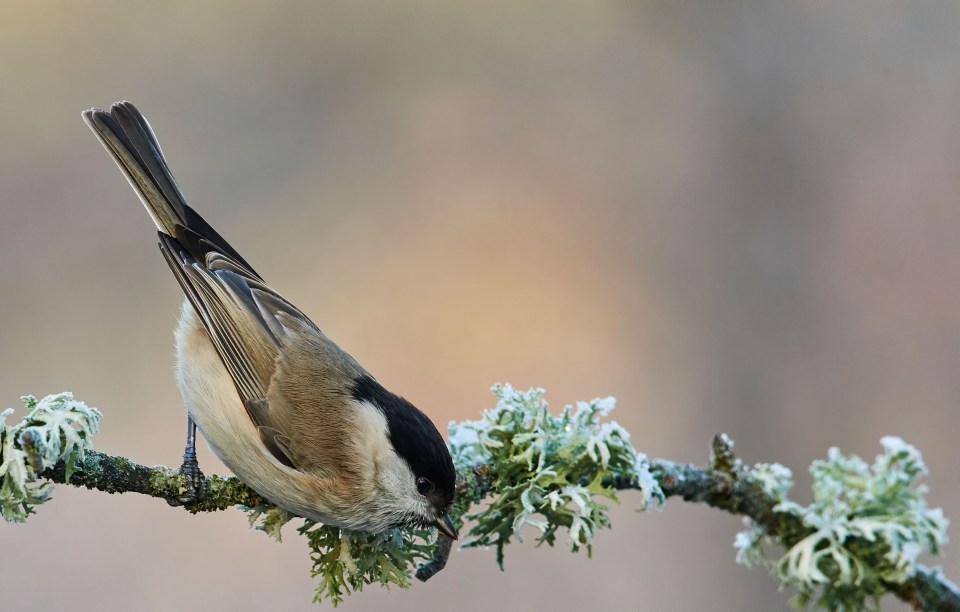Species Guide: Crested Tit (Lophophanes cristatus)
Family: Paridae
The Crested Tit (formerly Parus cristatus, now Lophophanes cristatus) is a small, striking woodland passerine in the tit family (Paridae). It is most strongly associated with mature conifer (pine) forests across much of central and northern Europe, with isolated populations (and a distinct subspecies) in northern Scotland. The species is classified as Least Concern on the IUCN Red List and occurs as a widespread but patchily distributed resident across its range.
Appearance
Male & Female
Males and females are very similar (sexes alike). The crested tit is instantly recognisable by its conspicuous, black-and-white, spiky crest and the bold “bridled” face pattern: a black eye-stripe, black throat bib and collar that contrast with pale cheeks and buff underparts. Upperparts are warm grey-brown. Plumage variation between subspecies is modest (some western birds show warmer tones).

Juvenile
Juvenile crested tits resemble adults but with a less well-developed crest and slightly duller facial contrast. Juveniles gain adult plumage over their first autumn and winter.

Diet
Crested tits are primarily insectivorous during spring and summer, taking caterpillars, spiders, and other invertebrates. Switching to include a substantial proportion of conifer/pine seeds and other plant material in autumn and winter. They forage actively on trunks and branches, often low in the canopy, and will join mixed winter flocks with other tits; they also cache food items in the run-up to winter in some parts of their range.1 They will visit garden feeders where available (mealworms and small seeds are favored).
Habitat
Preferred habitat is mature coniferous forest, especially Scots pine and other pinewood, and mixed conifer/deciduous woodland. In continental Europe, the species can occupy a wider range of woodlands (including montane forests), but in the UK it is essentially restricted to Caledonian pinewoods and plantations in northern Scotland. They nest in tree cavities or in rotten stumps and will sometimes use nest boxes or old woodpecker holes.

Behavior
Crested tits are active, agile foragers that cling to trunks and hang from twigs much like other tits. They are generally resident (non-migratory) and form stable territories during the breeding season; outside the breeding season they commonly join mixed species flocks. Pairs commonly form long-term bonds, often described as monogamous and sometimes lifelong.
Call & Song
The vocal repertoire is typical of Paridae: a series of short, sharp “zee/tsi/tsit” notes and chatters rather than a long melodious song. Their call is described as a repetitive “zee-zee-zee” or a thin ticking chatter, useful for locating birds in dense conifers but not usually as musical or prolonged as some other small passerines.
Life cycle & breeding
Breeding season runs mainly from spring (March–June in much of the range). Females excavate or occupy a tree hollow or rotten stump, line the nest with moss/lichens/hair, and lay ~5–8 eggs. Incubation lasts about 13–16 days; nestlings fledge around 17–21 days after hatching. Many pairs raise one or sometimes two broods per season. Juveniles are fed by parents for a period after fledging. Average lifespan in the wild is modest (typical tit average ~2 years), although individual birds can live longer.

Biometrics
| Length | 11-12 cm |
| Wing Span | 17-20 cm |
| Body Weight | 10-13 grams |
| Longevity | 2 Years |
Natural Predators
Predators include aerial raptors (notably the sparrowhawk) that take adults while foraging, and a range of mammalian and corvid nest predators such as pine martens, red squirrels, and corvids that may raid eggs and nestlings. Nest predation has been recorded as a significant cause of nest failure in some studies, and predation risk influences nesting site choice (deep cavities, rotten stumps).
Relationship to Humans
The Crested Tit is a popular and much-admired species among birdwatchers and naturalists. Its bold facial markings and erect crest make it a woodland favorite, particularly in Scotland, where it is a local emblem for some communities and reserves. It has featured in local natural history writing and visitor guides to Caledonian pinewoods rather than in a large body of classical fables or myths: unlike corvids or owls, it does not have a large footprint in European mythic tradition, but it figures in local Highland nature lore and is celebrated in conservation and ecotourism materials. In gardens and reserves, the species benefits from maintenance of mature pine woodland and provision of natural tree cavities; nest boxes can help where natural cavities are scarce.
Conservation Status
IUCN / BirdLife classification: Least Concern. The species has a very large range and a large total population (estimated in the millions across Europe), so it does not meet thresholds for a higher threat category.
Trends & regional concerns: Although globally secure, some regional populations are vulnerable to habitat loss or fragmentation, especially where native pinewood is lost or heavily managed. The Scottish population is geographically isolated from continental populations and has been the focus of monitoring and local conservation attention. Availability of mature pines, deadwood (nest sites), and low-intensity forestry are important for maintaining local numbers. Several national monitoring schemes and conservation groups urge continued high-quality records to better assess local trends.
U.K.
Conservation Status

Global
Conservation Status

Related Articles








Ad Space
References
- Lovette, I. et al. (2016) The Cornell Lab of Ornithology, handbook of bird biology. Third edition. Chichester: Wiley. [Accessed 15/10/2025]
- Krams, I. (2001) ‘Communication in crested tits and the risk of predation’, Animal behaviour, 61(6), pp. 1065–1068. [Accessed 12/11/2025]
CITATIONS
- Jokinen, S. and Suhonen, J. (1995) ‘Food Caching By Willow and Crested Tits: A Test of Scatterhoarding Models’, Ecology (Durham), 76(3), pp. 892–898. [Accessed 12/11/2025] ↩︎
- By IUCN Red List of Threatened Species, species assessors and the authors of the spatial data., CC BY-SA 3.0, [Accessed 12/11/2025] ↩︎







